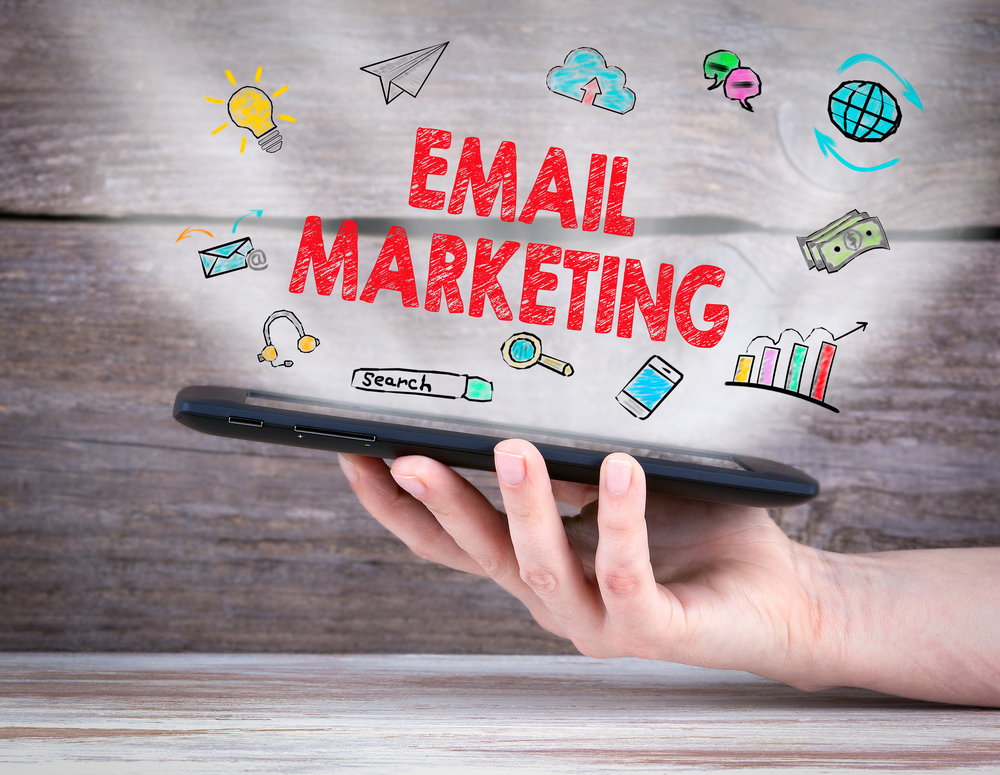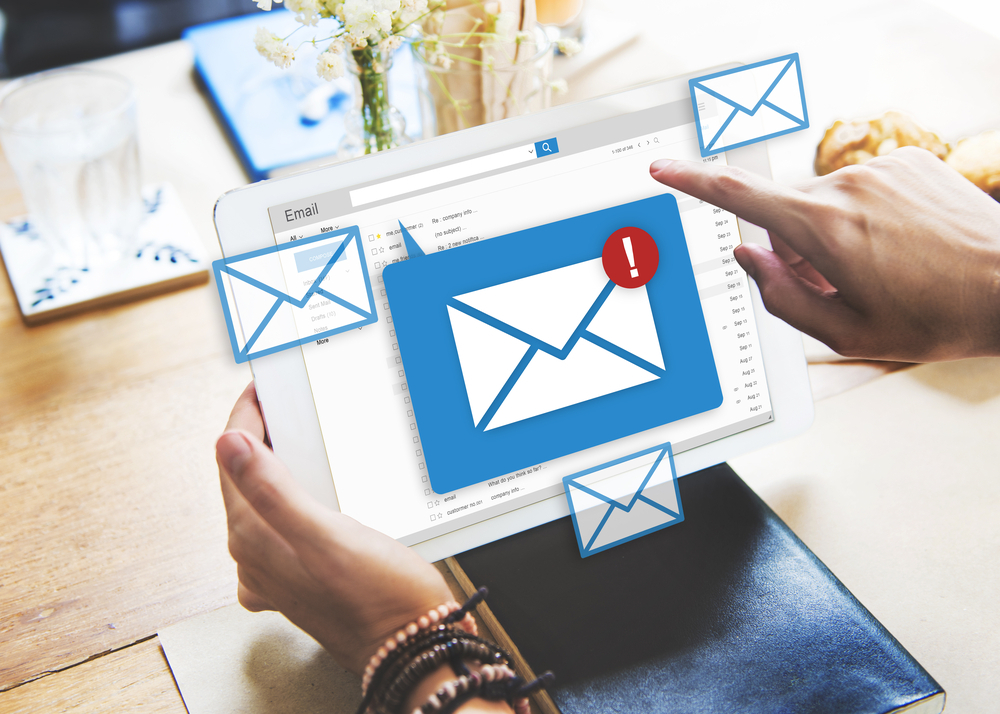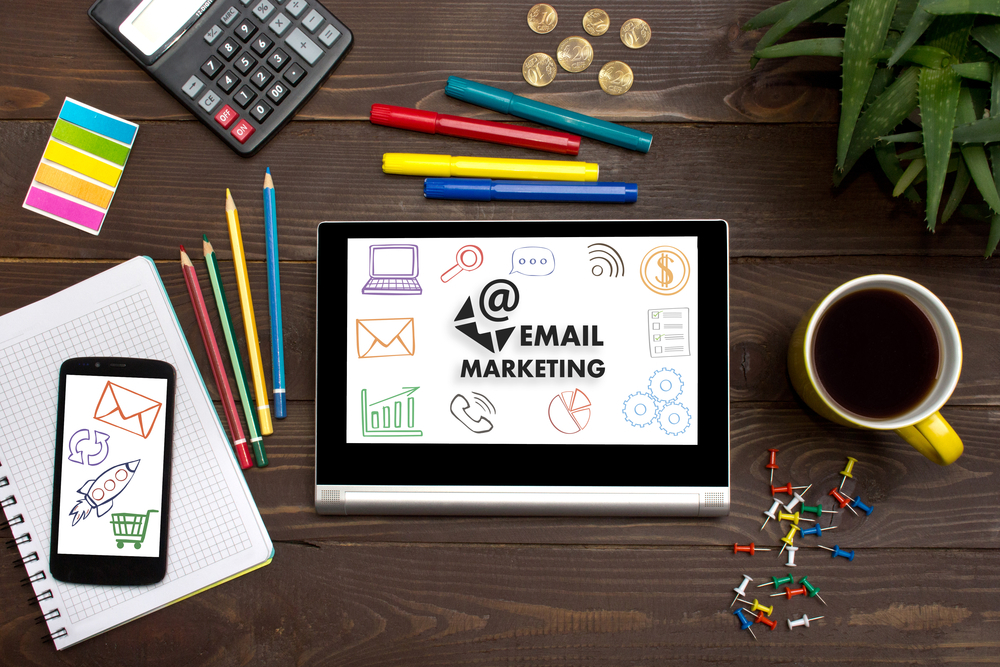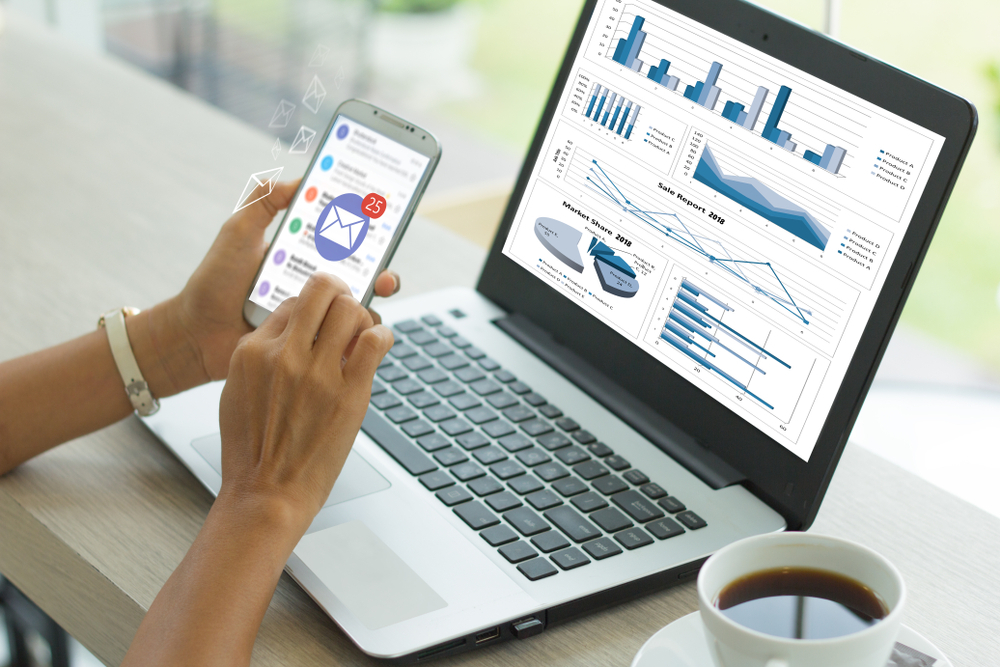
In today’s fast-paced digital world, businesses must stay ahead of the competition to succeed. One of the most effective ways to do so is through email marketing. Email marketing is sending commercial messages to a group of people through email.
It is a powerful tool that enables businesses to communicate with their customers and prospects in a personalized and targeted way.
Email marketing can promote products, services, events, or any other marketing campaign. It is a cost-effective method that offers a high ROI compared to other marketing channels.
This article will explore email marketing and why businesses must incorporate it into their marketing strategy. We will also discuss some best practices to help businesses get started with email marketing.
What is email marketing?

Email marketing is a form of direct and digital marketing that uses email to promote a business’s products or services. It informs customers about company news, limited-time offers, product updates, and more. It is a powerful communication tool to build relationships with potential customers and increase sales.Email marketing has a high return on investment (ROI) and is a low-cost but high-impact tool that can increase customer engagement and drive sales.
Importance of Email Marketing
The importance of email marketing lies in its ability to reach a large audience quickly and efficiently. With the right strategy, email marketing can help businesses of all sizes increase brand awareness, generate leads, and drive sales.
Email marketing lets businesses connect with their audience directly and create a personalized experience for each recipient. One of the key benefits of email marketing is its high return on investment (ROI). According to a report by the Direct Marketing Association, email marketing has an average ROI of $42 for every $1 spent.
Email marketing also provides businesses with valuable data and insights that can be used to improve future campaigns. By tracking open rates, click-through rates, and other metrics, businesses can analyze customer behavior and preferences and adjust their strategies accordingly.
Types of Email Marketing Campaigns

Marketing is a versatile tool that can be used for various purposes. Here are some of the most common types of email marketing campaigns:
Welcome emails

Welcome emails are the first communication that a customer receives after subscribing or signing up for a service or newsletter.
They are designed to introduce the customer to the business, set expectations, and provide them with any necessary information.
A welcome email typically includes a friendly greeting, a thank you for subscribing, and a brief introduction to the business.
It may also contain information about the benefits of being a subscriber, such as exclusive offers, discounts, or access to content.
In addition, welcome emails can provide customers with instructions on how to get started with the service or product, including links to resources or tutorials.
This helps to ensure that customers have a positive experience and can easily navigate the business’s offerings.Welcome emails can also gather additional information about customers, such as their preferences or interests, which can help businesses tailor their communications and services to meet their needs better.
Overall, welcome emails are important for businesses to establish relationships with new customers and set the tone for future interactions.
Newsletter emails
Newsletter emails are regular communications sent by businesses or organizations to their subscribers, typically weekly or monthly. They contain news, updates, and information about the business, industry, or topic of interest.
These emails can include various content, such as articles, blog posts, videos, and images. They may also feature exclusive content, such as promotions, discounts, or special offers for subscribers.
Newsletter emails are an effective way for businesses to stay in touch with their customers and keep them engaged with the brand. By providing valuable information and insights, businesses can build trust and establish themselves as thought leaders in their industry.
In addition, newsletter emails can be used to promote new products or services and to drive traffic to the business’s website or social media channels. Businesses can encourage subscribers to take action and engage with the brand by including calls to action and links to relevant content.
Overall, newsletter emails are a powerful marketing tool that can help businesses build stronger customer relationships and drive engagement and sales.
Prom emails are messages businesses send to their subscribers or customers to promote a product, service, or event. These emails are designed to persuade the recipient to take a specific action, such as purchasing, attending an event, or signing up for a service.
Promotional emails typically include a clear call-to-action, such as a button or link that directs the recipient to a landing page where they can take the desired action. They may also feature exclusive promotions or discounts, which can help entice the recipient to purchase or sign up for a service.
Promotional emails

To be effective, promotional emails should be well-designed, visually appealing, and personalized to the recipient. This can include using the recipient’s name, past purchase history, or other relevant information to create a more personalized experience that resonates with the recipient.
It’s important for businesses to strike a balance with promotional emails, as sending too many can lead to email fatigue and cause recipients to unsubscribe.
However, when used strategically; promotional emails can be a powerful tool for driving sales and increasing customer engagement.
Abandoned cart emails
Abandoned cart emails are marketing emails sent to customers who have added items to their online shopping cart but still need to complete the purchase. These emails encourage customers to return to their cart and complete the transaction.
Abandoned cart emails typically include a reminder of the items left in the cart, along with images and pricing information.
They may also include incentives such as discounts or free shipping to motivate the customer to complete the purchase.
Research shows abandoned cart emails can be highly effective in recovering lost sales. According to a study by SaleCycle, the average open rate for abandoned cart emails is 45%, with a click-through rate of 21%. These emails have recovered an average of 10-15% of abandoned carts.
Abandoned cart emails can be automated using e-commerce platforms or email marketing software. The timing and frequency of these emails can be customized based on the customer’s behavior and preferences, and they can be a cost-effective way to increase sales and revenue for online businesses.
Re-engagement emails

Re-engagement emails are marketing emails sent to customers who have not interacted with a business or brand for a certain period of time. These emails aim to re-engage the customer and encourage them to become active again.
Re-engagement emails typically remind the customer of past interactions with the business, such as previous purchases or website visits. They may also include incentives such as discounts or special offers to motivate the customer to re-engage.
Re-engagement emails aim to prevent customer churn, which occurs when customers stop using a product or service. Businesses can reduce churn and retain more customers over time by reaching out to inactive customers and providing them with a reason to re-engage.
Re-engagement emails can be automated using email marketing software, and the timing and content of these emails can be customized based on the customer’s behavior and preferences. Effective re-engagement emails can increase customer loyalty and improve revenue for businesses.
Event invitation emails
Event invitation emails are marketing emails sent to customers and subscribers to invite them to attend a specific event, such as a product launch, conference, webinar, or workshop. These emails aim to generate interest and excitement for the event and encourage recipients to register or RSVP.
Event invitation emails typically include details about the event, such as the date, time, location, and agenda. They may also include information about the event’s purpose, keynote speakers or presenters, and any special activities or offers available to attendees.
Event invitation emails aim to create a sense of exclusivity and urgency that motivates recipients to take action and register for the event. Effective event invitation emails should be visually appealing, concise, and easy to understand, with a clear call-to-action that encourages recipients to register or RSVP.
Event invitation emails can be automated using email marketing software, and the timing and frequency of these emails can be customized based on the event’s date and the recipient’s behavior and preferences. Effective event invitation emails can lead to increased attendance and engagement and improved brand awareness and customer loyalty.
Survey or feedback emails

These types of emails are marketing emails sent to customers and subscribers to collect their feedback and opinions about a product, service, or experience. These emails aim to gather insights, improve the business’s offerings, and show customers that their opinions are valued and heard.
Feed back and survey emails typically include a request for the recipient to complete a survey or provide feedback, along with a brief explanation of why their feedback is important. The email may also include an incentive, such as a discount or entry into a prize drawing, to encourage the recipient to participate.
The goal of survey or feedback emails is to gather actionable insights that can be used to improve the business’s products, services, or customer experience. Effective survey or feedback emails should be clear and concise, with a simple and easy-to-use survey format that encourages high response rates.
Survey or feedback emails can be automated using email marketing software, and the timing and frequency of these emails can be customized based on the recipient’s behavior and preferences. Effective surveys or feedback emails can improve customer satisfaction, loyalty, and business performance.
Using these different types of email marketing campaigns, you can engage your audience and achieve different goals, such as increasing sales, building brand awareness, or improving customer retention. Customizing email campaigns to suit your audience and business goals can ensure success and strong ROI.
Creating an Email Marketing Strategy
An effective email marketing strategy is crucial for any business looking to reach and engage with customers through email. A well-planned strategy can help businesses achieve their marketing goals and drive revenue growth. Here are some steps to help you create an email marketing strategy that works for your business:
Define Your Objectives
The first step in creating an email marketing strategy is defining your objectives. What do you want to achieve with your email campaigns? Do you want to drive sales, increase website traffic, or build brand awareness? Setting clear and measurable goals that align with your overall business strategy is important.
Define Your Target Audience
To create effective email campaigns, you need to understand your target audience. Who are they, and what are their needs and interests? Use data from your customer database, website analytics, and surveys to build customer profiles and segment your email list. The more you know about your audience, the better you can tailor your emails to their preferences and needs.
Choose Your Email Types
Many different types of emails send subscribers newsletters. Each type of email serves a purpose and is tailored to your specific goals and audience. Choose the email types that align with your objectives and will resonate with your target audience.
Develop Your Content Strategy
Once you’ve defined your objectives, target audience, and email types, it’s time to develop your content strategy. What kind of content will you include in your emails? Will you use text, images, videos, or a combination of all three? Your content strategy should align with your email types, objectives, and audience preferences.
Create Your Email Templates
Creating email templates is an essential part of your email marketing strategy. Your templates should be visually appealing, mobile-friendly, and easy to navigate. Use your brand guidelines to create a consistent look and feel across all your emails, and make sure your templates are optimized for different email clients and devices.
Choose Your Email Service Provider
An email service provider (ESP) is a tool that helps you create, send, and track your email campaigns. There are many different ESPs to choose from, each with its unique features and pricing plans. Look for an ESP with the needed features like automation, segmentation, and analytics.
Measure Your Results
Measuring the success of your email campaigns is crucial to refining your strategy and achieving your objectives. Use your ESP analytics tools to track your open rates, click-through rates, conversion rates, and other key metrics. Use this data to refine your content strategy, segment your email list, and optimize your templates.
Creating an effective email marketing strategy is a process that requires planning, execution, and measurement. By defining your objectives, understanding your audience, and developing a content strategy, you can create email campaigns that resonate with your subscribers and drive business growth.
How to build an effective email marketing list

Building an effective email marketing list is crucial for the success of your email marketing campaigns. Here are some steps you can take to build a quality email list:
Offer value
To attract subscribers, offer something of value, such as a free e-book, discount, or exclusive content. Make sure your offer is relevant to your target audience and provides a clear benefit.
Use opt-in forms
Place opt-in forms on your website, social media channels, and other touchpoints where potential subscribers can easily sign up to receive your emails. Make sure your opt-in forms are prominently displayed and easy to fill out.
Leverage social media
Use social media platforms to promote your email list and encourage people to sign up. Consider running social media ads to reach a wider audience and drive sign-ups.
Host events
Host events such as webinars, workshops, or meetups and collect email addresses from attendees. This is a great way to connect with your target audience and build relationships.
Use referral programs
Encourage your existing subscribers to refer their friends and family to your email list. Offer incentives such as discounts or exclusive content to incentivize referrals.
Partner with other businesses
Partner with other businesses in your industry and offer to promote each other’s email lists. This can help you reach a wider audience and attract new subscribers.
Keep your list clean
Regularly clean your email list to remove inactive subscribers or those who have unsubscribed. This will help improve your email deliverability and ensure your messages reach your target audience.
By following these steps, you can build an effective email marketing list that is comprised of engaged and interested subscribers. Remember to always focus on providing value to your subscribers and building long-term relationships with them.
Email marketing is a crucial component of any successful marketing strategy. However, not all email marketing is created equal.
Quality email marketing is essential to build brand awareness, increase customer retention, generate leads, and drive sales.
To create an effective email marketing campaign, you need to build a quality email list. This can be achieved by offering value, using opt-in forms, leveraging social media, hosting events, and using referral programs. It’s also important to keep your list clean by removing inactive subscribers periodically.
Once you have a quality email list, you must create the quality email content. This compelling subject lines, using a conversational tone, sizing including visuals, and providing value by offering something useful or helpful for free.
Your email marketing campaigns are also critical. You can do this by tracking open and click-through rates, measuring conversions and using software like MailChimp or AWeber to collect data.
To ensure your email marketing campaigns are successful, you should create segmented email lists, build relationships with subscribers, optimize emails for deliverability, and remain compliant with regulations.
Quality email marketing is essential for any business looking to increase brand awareness, customer retention, lead generation, and sales. By following best practices for email marketing and creating quality email content, you can achieve success in your email marketing campaigns.
Tips for Creating Quality Email Content

Creating quality email content is essential for successful email marketing campaigns. Here are some tips to help you create engaging and effective email content:
Write a compelling subject line
Your subject line should be attention-grabbing and relevant to the content inside the email. A good subject line can increase your open rates and improve the overall success of your email campaign.
Personalize your emails
Use your subscriber’s name and other details that you know about them, such as their interests or location. This can make your emails feel more personal and relevant to your audience.
Keep it short and sweet
People are busy and don’t have time to read long emails. Keep your emails short and concise, focusing on one main idea or call to action.
Use a conversational tone
Write your emails as if you’re having a conversation with a friend. Avoid using overly formal language or industry jargon your audience may not understand.
Provide value – Your subscribers give you their time and attention, so make it worthwhile. Provide tips, resources, and other helpful information your subscribers will find useful.
Include visuals
Images videos can help break up text-heavy emails and make them more visually appealing Use visuals to reinforce your and emails more engaging.
Use a call-to-action
Your call to action should be clear and easy to understand. Use action-oriented language and make it easy for your subscribers to take the next step.
Test and optimize – Test different subject lines, content formats, and calls to action to see what works best for your audience. Use data and analytics to optimize your campaigns for better results over time.
By following these tips, you can create quality email content that engages your audience and drives results for your business.
How to Measuring the success of your email marketing campaigns
Measuring the success of your email marketing campaigns is essential to understanding what’s working and what’s not. Here are some key metrics to track when measuring the effectiveness of your email marketing:
Open rate:
This metric measures the percentage of subscribers who opened your email. A high open rate indicates that your subject line and sender name are effective at capturing your audience’s attention.
Click-through rate (CTR):
The CTR measures the percentage of subscribers who clicked on a link in your email. This metric can help you understand which links and calls to action are resonating with your audience.
Conversion rate:
The conversion rate measures the percentage of subscribers who took a desired action after clicking through your website. This could be making a purchase, filling out a form, or signing up for a newsletter.
Bounce rate:
The bounce rate measures the percentage of emails that were undeliverable. A high bounce rate could indicate an issue with your email list quality or email deliverability.
Unsubscribe rate:
The unsubscribe rate measures the percentage of subscribers who chose to opt-out of your email list. A high unsubscribe rate could indicate that your content needs to be more relevant and engaging for your audience.
Revenue generated:
Ultimately, the success of your email marketing campaigns should be measured by the revenue generated. By tracking the revenue generated from your email campaigns, you can determine the ROI of your efforts and make informed decisions about future campaigns.
In addition to these metrics, it’s important to track the performance of your email campaigns over time and compare them to industry benchmarks. This will help you understand how your campaigns perform relative to others in your industry and identify areas for improvement.
Email Marketing Mistakes to Avoid

No doubt email marketing can be a highly effective way to reach your audience, but it’s important to avoid some common mistakes that can undermine your efforts. Here are some email marketing mistakes to avoid:
Not Segmenting Your List:
One of the biggest mistakes you can make is emailing different interests, so it’s important to group them into different segments based on their preferences, behaviors, location, and other demographics. This allows you to send more targeted and relevant content that your subscribers are more likely to engage with.
Sending Too Many Emails:
Bombarding your subscribers with too many emails can lead to fatigue and disengagement. Finding a frequency that works for you and your subscribers is important. Consider sending a weekly or bi-weekly newsletter instead of daily emails.
Not Using an Email Marketing Platform:
Using a personal email account to send marketing emails can be a big mistake. Not only does it look unprofessional, but it also needs the features and analytics that email marketing platforms provide. Choose a reputable email marketing platform to ensure your emails get delivered, and you can track their performance.
Not Optimizing for Mobile and Responsive Design:
With over 50% of emails opened on mobile devices, optimizing your emails for mobile is important. Use a responsive design that adjusts to different screen sizes, and test your emails on different devices to ensure they are easily readable and clickable.
Ignoring Email Deliverability:
Deliverability refers to the ability of your emails to reach your subscribers’ inboxes. Poor deliverability can lead to low open rates and lost revenue. Pay attention to email deliverability factors such as email authentication, sender reputation, and email content to ensure your emails are delivered.
By avoiding these email marketing mistakes, you can improve the effectiveness of your campaigns and build stronger relationships with your subscribers.
Best email marketing tools for beginners
If you’re starting with email marketing, here are some beginner-friendly email tools to consider:
Mailchimp
Mailchimp is a popular user-friendly email marketing platform that offers a free plan for up to 2,000 subscribers. It has a drag-and-drop email builder that offers pre-designed templates to simplify creating emails.
Constant Contact
Constant Contact is another user-friendly email marketing platform that’s great for beginners. It offers a 60-day free trial, a drag-and-drop email builder, pre-designed templates, and easy list management.
ConvertKit
ConvertKit is a great email marketing tool for bloggers and content creators. It’s easy to use and offers a simple email editor, visual automation builder, and landing page builder.
Campaign Monitor
Campaign Monitor is a user-friendly email marketing platform that offers a drag-and-drop email builder, pre-designed templates, and easy list management. It also offers analytics to track your email campaign performance.
Aweber
Aweber is a beginner-friendly email marketing tool that offers a free trial and easy-to-use email templates. It also has a drag-and-drop email builder and automation features to help you save time.
All of these email marketing tools are great options for beginners and offer user-friendly interfaces and features to help you get started with your email marketing campaigns.
We are available to assist you with any information you need regarding these beginner’s tools.
Benefits of email marketing

Email marketing is a powerful digital marketing tool that offers numerous benefits for businesses of all sizes. Here are some of the key benefits of email marketing:
Cost-effective:
Email marketing is one of the most cost-effective marketing channels available. Compared to other forms of advertising, the cost of sending an email campaign is relatively low. This makes it ideal for small businesses and startups with limited marketing budgets.
Personalization:
Email marketing allows businesses to personalize their messages to individual recipients. You can improve engagement and conversion rates by segmenting your email list and tailoring your messages to specific groups.
Increased brand awareness:
Regularly sending emails to your subscribers can increase brand awareness and keep your business top-of-mind with your audience. This can lead to more website traffic, social media engagement, and, ultimately, more sales.
Better customer relationships:
Email marketing can help businesses build better customer relationships. Businesses can establish trust and loyalty with their subscribers by sending relevant and engaging content.
Improved tracking and analytics:
Email marketing platforms provide detailed tracking and analytics, allowing businesses to measure the success of their campaigns. Metrics like open rates, click-through rates, and conversion rates can provide valuable insights into what’s working and what’s not.
Increased sales:
Ultimately, email marketing aims to drive sales. By sending targeted and personalized messages to your subscribers, you can increase the likelihood of them purchasing or taking another desired action.
Email marketing is highly effective and efficient for businesses to reach their target audience, build brand awareness, and drive sales.
Conclusion

Email marketing is an essential component of any digital marketing strategy. It offers a direct and personal way to communicate with your audience and build lasting relationships. Email marketing can drive traffic to your website, increase sales, and boost brand awareness. By sending targeted and relevant content to your subscribers, you can improve engagement, loyalty, and customer retention. To make the most of your email marketing efforts, it’s important to avoid common mistakes, use a reputable email marketing platform, segment your list, optimize for mobile, and track performance with the strategy tools; email marketing a highly to grow your business and achieve your marketing goals.


[…] software platforms make it easy to create professional-looking emails, manage your subscriber list, and track the success of your […]